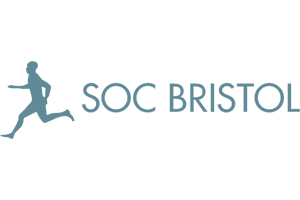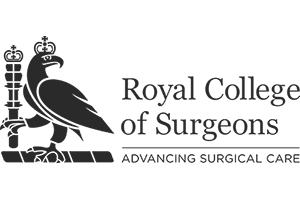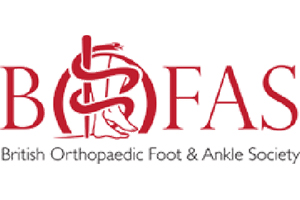There are a variety of operations to correct severe deformities of the small toes, usually “hammer” or “claw” toes. These include:
Modified “Oxford” procedure
Modified “Stainsby” procedure
Toe fusion
Tendon transfer
Why would they be done?
If the deformity is painful, causes the toe to rub in the shoe or causes pressure in the ball of the foot, and cannot be accommodated in a shoe, surgery would be considered. Some people prefer to have shoes with extra depth and possibly an insole provided. Others do not like such shoes, or are not comfortable in them. The choice of operation depends on the type and severity of the deformity.
An “Oxford” procedure will be performed if the toe is fixed in position and it is painful on the top or tip of the toe.
A “Stainsby” procedure will be performed if the toe is fixed in position and it causes pain on the ball of the foot as well as pain on the top of the toe.
A fusion is usually performed if the toe is deformed at the last joint causing pain at the end of the toe but the rest of the toe is pain free.
A tendon transfer will be performed if the toe is completely mobile and the deformity can be corrected. This will usually only be performed in younger patients.
What does each operation involve?
Can they be done as a day case operation?
If you are medically fit, have someone who can collect you and look after you after the operation, and you are comfortable afterwards, the operation can be done on a day case basis. However, if you have other medical problems such as diabetes, asthma or high blood pressure, you may have to be admitted the day before for tests and stay overnight after surgery. If you cannot be collected and looked after you must stay overnight to avoid complications.
If you are having many toes operated on, especially if both feet are involved, it may be best to stay in for a day or two to allow swelling to go down. This will be discussed with you in clinic when you are offered surgery.
Will I have to go to sleep (general anaesthetic)?
The operation can be done under general anaesthetic (asleep). Alternatively, an injection in the back, leg or around the ankle can be done to make the foot numb while the patient remains awake. Local anaesthetic injections do not always work and in that case you may have to go to sleep if the operation is to be done. Your anaesthetist will advise you about the best choice of anaesthetic for you.
In addition, local anaesthetic may be injected into your leg or foot while you are asleep to reduce the pain after the operation even if you go to sleep for the surgery. You will also be given pain-killing tablets as required.
Will I have a plaster on afterwards?
No plaster is required if you are only having your toes straightened. Some people also have a bunion corrected, or an operation for arthritis of the big toe, at the same time. If so you may have a plaster shoe applied to protect the big toe.
What will happen afterwards?
The dressings on your foot will be removed two weeks after surgery. If a pin has been put in the toe, this will stay in for another 4 weeks. For the other operations, the paper stitches will be replaced and need to be kept on for another 4 weeks. Keep the pin and wounds dry until any scabs have healed and fallen off.
After the pin or paper stitches have been removed, you will be taught how to massage the wound and the toe, and how to tape the toe to prevent it tightening up again. Once the pinhole is dry and the scab has fallen off, you can get the toe wet.
Usually you will be seen again about 3 months later to check all is well. After that, you can arrange to come back if you are having any problems.
How soon can I….
Walk on the foot?
You can walk on the foot immediately after surgery. For the first 2 weeks, you should avoid walking if possible and only put your weight through the heel. When not walking, rest with your foot elevated to reduce swelling.
It will be impossible to wear an ordinary shoe because of the dressings so you will be provided with a special shoe.
Go back to work?
If your foot is comfortable, and you can keep your foot up and work with your foot in a special shoe, you can go back to work 2 weeks after surgery. On the other hand, in a manual job with a lot of dirt or dust around, you may need to take anything up to two months off work. How long you are off will depend on where your job fits between these two extremes.
Drive?
If you have only your left foot operated on and have an automatic car you can drive within a few days of the operation, when your foot is comfortable enough. Most people prefer to wait till the pins are removed and they can wear a shoe.
Play sport?
After your pins or paper stitches are removed you can start taking increasing exercise. Start with walking or cycling, building up to more vigorous exercise as comfort and flexibility permit. Most people can get back to their previous level of activity within 3-4 months of surgery
What can go wrong?
The commonest problem is recurrence of the deformity, usually to a much less severe degree then before. This occurs in about 10% of people, but only a few of these will have to have further surgery.
Most people’s toes will be fairly swollen after the operation, and sometimes some swelling persists indefinitely.
The wounds and pinhole usually heal quickly, but occasionally these can become infected and need antibiotics.
The nerves and blood vessels in a toe are quite small and may be stretched or damaged in the course of surgery. In severely deformed and stiff toes, all the vessels and nerves tend to be tethered together close to the joints. As a result, about 5-10% of toes will be a bit numb or sensitive afterwards. Rarely the blood supply to a toe may be so badly affected that it dies or has to be amputated.





